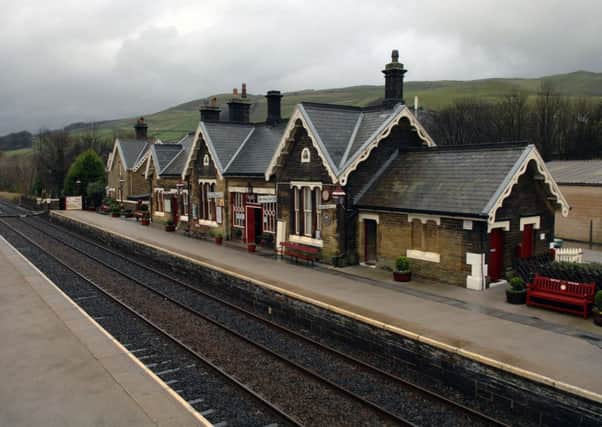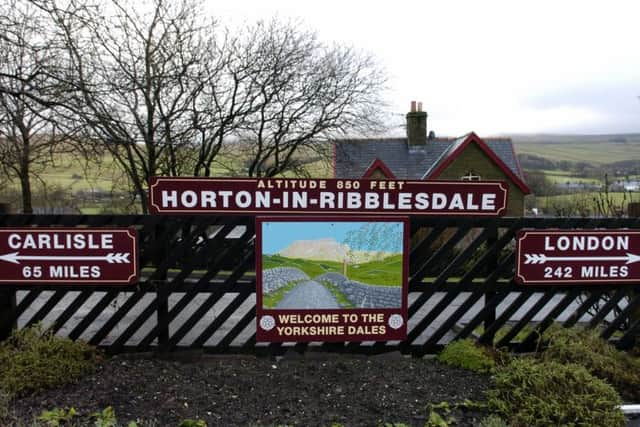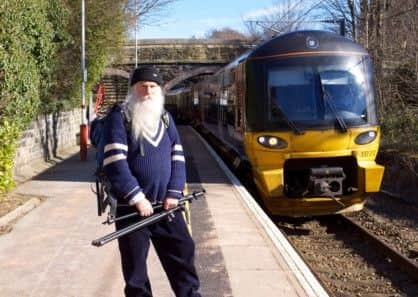How I saved Settle-Carlisle line


Perhaps it was some grand celestial script that a few years ago put Michael Portillo and a TV crew on the 11.46 train to Garsdale.
The man once tipped as a future leader of the Conservative Party now found himself on a quite different track, making television documentaries about great railways. And here he was on one of the greatest of them all, the Settle-Carlisle, which as a politician he had saved from certain closure.
Advertisement
Hide AdAdvertisement
Hide Ad“It was mainly coincidence I wound up making programmes about railways,” he says, “but I also think, possibly, given that I spent two years being responsible for trains as Minister of State for Transport, I had developed a great deal of enthusiasm for them and enthusiasm is one of the things that works on television. I think that’s what appealed to the BBC.”


His enthusiasm for the Settle-Carlisle is well known. It was his intervention exactly 25 years ago that prevented state-owned British Rail from axing the 72-mile route through some of England’s bleakest terrain, allowing it to achieve fame as one of the world’s most scenic railways.
When constructed in the mid 19th-century the line had the single purpose of providing an alternative route to Scotland for the Midland Railway, which was then in fierce competition with its rival the London and North Western. The engineers who planned the line must have seemed crazy, however, particularly because the not inconsiderable problem of Yorkshire’s highest mountain, Whernside, stood in the way.
It required a 6,000-strong labour force working almost non-stop between 1869 and 1876. The challenge of Whernside was dealt with by blasting the one-and-a-half-mile-long Blea Moor Tunnel from Ribblehead through to Upper Dentdale. Thirteen more tunnels would be required as well as 22 dramatic viaducts, the longest of them marching for a quarter of a mile across moorland at Ribblehead and supported by 100ft-high arches.
Advertisement
Hide AdAdvertisement
Hide AdBut in the early 1980s the line was in desperate trouble. Passenger numbers were declining, goods traffic nonexistent, and urgent repairs would require millions of pounds of investment to keep trains running. Centrepiece of British Rail’s closure case was the spectacular viaduct at Ribblehead, which was said to be virtually in danger of collapse.


When the closure notice was served in 1983 the line looked like just another victim of the hard-hearted economics associated with then-Prime Minister Margaret Thatcher. And to many observers, Michael Portillo – seen as a purist Thatcherite – was an unlikely saviour of the Settle-Carlisle.
“It was quite a political problem,” he admits. “The government was asking British Rail to make savings so that it would require less public subsidy. So why were we interested in saving the line? I think the Conservative government, right up to and including Margaret Thatcher, had two contrasting points of view. On the one hand we wanted more efficiency, but on the other hand we also valued national heritage.”
The heritage aspect might have lost out to the efficiency argument, however, had not the figures on which British Rail based its argument for closure been subjected to independent scrutiny. The Friends of Settle-Carlisle Line (FoSCL) had been formed when the first horrified whispers about closure began to circulate. Suddenly, many thousands found the loss of the line unthinkable. The Ribblehead Viaduct was seen as one of the great icons of Yorkshire. Indeed, a Bishop of Wakefield described it as a man-made marvel in the same league as York Minster. Almost overnight, saving the viaduct and the line became a cause célèbre.
Advertisement
Hide AdAdvertisement
Hide AdFoSCL attracted to its ranks a relation of the Dambusters bouncing bomb inventor, Barnes Wallis, who applied his knowledge of civil engineering to the condition of the Ribblehead Viaduct and judged BR’s repairs estimate of £12m to be hugely excessive. More estimates were commissioned by FoSCL during the six-year campaign to save the line, and like their own bouncing bomb each one was lower than the previous figure. In the end, it was an independent assessment commissioned by Michael Portillo that finally blasted a hole through BR’s case.
He says: “Our engineer found the repairs could be done for £3m. That was a big change in the circumstances of British Rail’s closure argument. Also, part of the Friends group’s campaign was to promote the line like a closing down sale. They encouraged people to travel on it because it might be their last opportunity to do so, and the number of passengers went up to something like 350,000. That was a very big change.”
A few months into his two years as Minister for Transport, Portillo decided to take a secret journey along the line. It was arranged by one of his civil servants that he could ride in the cab of an engine hauling a passenger train, so he took a sleeper from Euston to Carlisle and intended to travel southwards to Settle.
“I wasn’t expecting any kind of publicity around it, but I was surprised when I got out at Carlisle the first thing I saw was a television camera. Then, as the train passed through each station on the line there were very large numbers of people waving banners with my name on them, all sorts of things. I was told later that an official in my department had leaked my visit. So you see, the line had friends everywhere.”
Advertisement
Hide AdAdvertisement
Hide AdThe full-time secretary of FoSCL at that time, Pete Shaw, looks back on the campaign as a long, hard grind. “At no point did we think we’d got such a clear cut case that we were going to win. It always felt as though the case was on a knife edge, and government announcements at the time made it look as though they were in favour of closure. At one point, Michael Portillo’s predecessor as Transport Minister actually stood up in the House of Commons and said the government were minded to approve closure.”
When Portillo took over responsibility for trains, FoSCL members managed to get a meeting with him. “He was noticeably open-minded,” Shaw says, “which we thought was a bit of a surprise because he had a reputation in the Conservative Party for being a hard-liner. But he listened to our arguments. He came north on several occasions and gradually we sensed the tide was turning.”
These days the line’s future has never looked more secure after a recent £100m upgrade. There are more passengers than ever, and the line’s strategic importance was demonstrated this winter when it became the only rail link between England and Scotland after weather damage to power lines on the East and West Coast main lines.
FoSCL now looks after many of the small stations along the line, and runs regular guided walks at weekends. Passenger numbers have also been stimulated by an annual walking and culture festival, the Ride2Stride, which brings visitors from around the world in April.
Advertisement
Hide AdAdvertisement
Hide AdMichael Portillo has been busy making another BBC2 series about railways, this time about trains in the First World War. But he will be back on the Settle-Carlisle for the 25th anniversary celebrations.
“Saving it,” he says, “was the greatest achievement of my political career.”
See www.foscl.org.uk for Friends of the Settle Carlisle Line guided walks and 25th anniversary events. The Ride2Stride festival runs from April 29 to May 5. Visit www.ride2 stride.org.uk to view the programme.